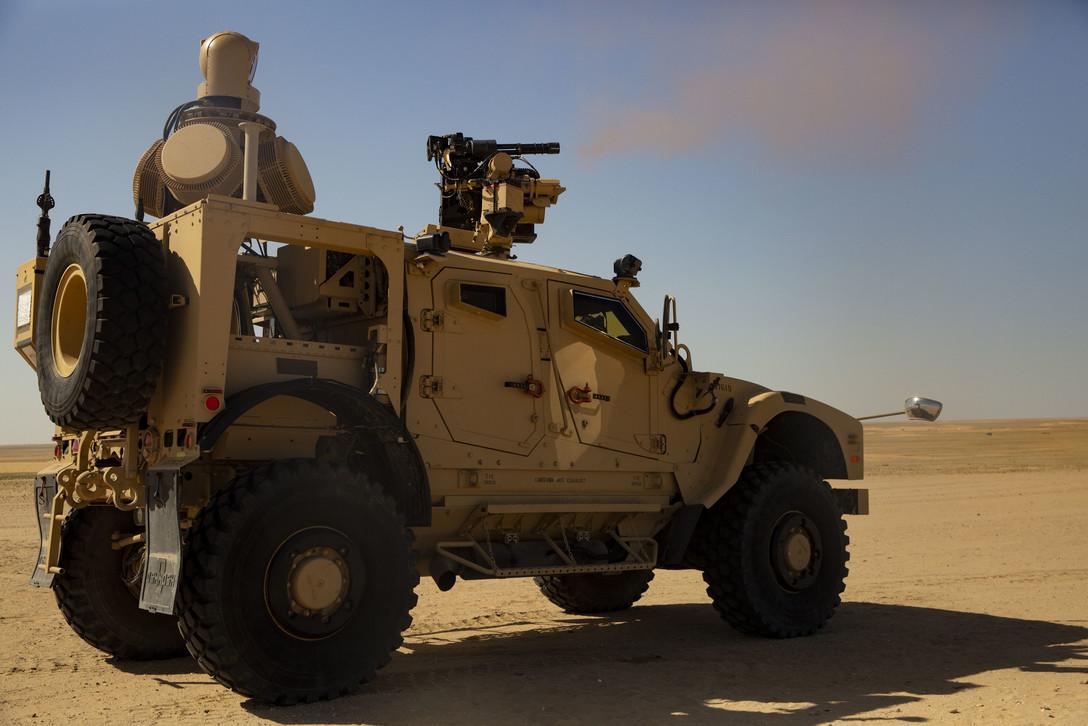
Counter-drone systems continue to proliferate on the market, but technical and operational challenges in countering small unmanned aircraft systems (UAS) have not yet been fully surmounted, says a new report by the Center for the Study of the Drone at Bard College, New York.
The second edition of the Center’s Counter-Drone Systems report lists 537 systems marketed by 227 companies in 38 countries, up from 235 in the first edition published in February 2018. This is despite removing 24 products from the database that no longer appear to be available.
Citing a March 2019 solicitation by the Pentagon’s Defense Innovation Unit which said “it has proven difficult to identify and mitigate threats using currently fielded technologies,” the report says “dozens of background interviews with military and law enforcement personnel have validated this assertion.”
The challenges extend beyond the issue of effectiveness “and include complex questions around safety, practicality, policy and legality,” says the report’s author, Arthur Holland Michel, founder and co-director of the Center.
When it comes to detection effectiveness, radar may struggle to pick up small UAS flying close to the ground, while cameras might confuse a drone with a bird or aircraft and be degraded by poor weather, low visibility and strong sunlight.
Electromagnetic interference may degrade the detection performance of radio-frequency sensors, with many potential sources of interference in urban areas. Radar, some RF systems and electro-optical/ infrared (EO/IR) sensors require line of sight to the drone, which can be problematic in urban areas.
Acoustic sensors and RF detection systems rely on a library of sounds and signals emitted by known drones, but given the rapid rate at which drones are emerging on the market “even libraries that are updated often will never cover 100% of the drones that might be operating,” the report says.
A major detection issue is the level of false negatives and false positives, the report said, noting that results of FAA testing of counter-drone systems showed distinguishing true positives from false positives in cluttered environments required a high level of manpower.
Distinguishing between legitimate and illegitimate drone use is another issue. Remote identification technology and the FAA’s pending Remote ID rulemaking, “may go a long way to addressing this issue once implemented, but it will not be a total fix,” the report says.
There is a short time window available in which to respond to a drone threat and potential dangers posed to bystanders by some counter-drone interdiction techniques. Long-range systems such as lasers and high-power microwaves “could pose a serious threat to aircraft operated above the targeted drone.”
In terms of interdiction effectiveness, the report points to results of a 2017 counter-UAS event staged by the U.S. Joint Improvised Threat Defeat Organization that showed the drones were resilient against damage. “More recent C-AUS exercises indicate this problem remains an enduring one,” it says.
Jammers have no effect against drones operating autonomously without an active RF link; many signal jammers have an effective range of only a few hundred meters; spoofing systems may not be universally effective; and all kinetic systems may struggle against drones moving fast or in unpredictable patterns.
Drone technology, meanwhile, is not standing still, the report says, noting research underway on UAS that can operate in GPS-denied environments, negating jamming, and are capable of actively defeating jamming or spoofing attacks.
Consumer drones may soon be controllable via mobile LTE networks rather than an RF link, the report says. LTE drones could be operated at essentially unlimited range and “would be difficult or dangerous to interdict with jamming systems without interfering with ubiquitous cellular communications,” it says.
The proliferation of counter-UAS systems will inevitably accelerate the development of technology to render them less effective, the report concludes, by programming drones to maneuver in patterns that make them hard to detect by automatic target algorithms.
The report also highlights the challenges posed by drone swarms. “A swarm doesn’t have to be dynamic or truly autonomous to achieve these effects: 10 individual drone operators flying 10 drones in unison may just be as difficult to defend against as a true autonomous swarm of 10 aircraft,” it says.





